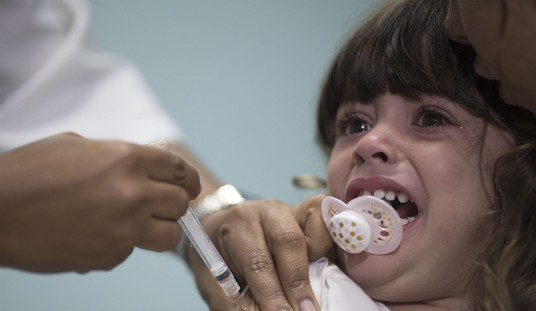Why does the coronavirus spread so quickly? According to a study published yesterday in Nature, it’s at least partly because people spread it before they even know they are sick. The study took evidence from 98 patients in a Chinese hospital and attempted to estimate when “viral shedding” meaning giving off virus particles that could infect others, began. What they found was that in the case of the coronavirus this shedding probably begins a few days before most people have symptoms and peaks right around, possibly right before, the first symptoms of illness hit. Here’s the abstract:
We report temporal patterns of viral shedding in 94 patients with laboratory-confirmed COVID-19 and modeled COVID-19 infectiousness profiles from a separate sample of 77 infector–infectee transmission pairs. We observed the highest viral load in throat swabs at the time of symptom onset, and inferred that infectiousness peaked on or before symptom onset. We estimated that 44% (95% confidence interval, 25–69%) of secondary cases were infected during the index cases’ presymptomatic stage, in settings with substantial household clustering, active case finding and quarantine outside the home. Disease control measures should be adjusted to account for probable substantial presymptomatic transmission.
The rest of the study is harder to parse but here’s the estimate of when the virus peaks in someone’s system:
Assuming an incubation period distribution of mean 5.2 days from a separate study of early COVID-19 cases1, we inferred that infectiousness started from 2.3 days (95% CI, 0.8–3.0 days) before symptom onset and peaked at 0.7 days (95% CI, −0.2–2.0 days) before symptom onset (Fig. 1c). The estimated proportion of presymptomatic transmission (area under the curve) was 44% (95% CI, 25–69%).
The study included some charts that illustrate how various diseases spread. Here’s the chart for SARS, a similar coronavirus which spread in 2002-2003. The bar at the top represents the moment someone became infected and the change of color from blue to red represents the first onset of symptoms. Below that bar is a distribution curve showing when the virus is shedding from the infected person. In the case of SARS, all of that happens after the person has symptoms, meaning they are likely to be aware they are sick before they become infectious:

Here’s a similar chart for the seasonal flu. In this case, notice that the distribution curve shows the infected person begins shedding the virus even before they have symptoms, though most of the distribution is after that point. As a result, someone can infect others with the flu before they realize they are sick.

What this study suggests is that COVID-19 viral shedding actually peaks just before the symptom onset. This graph was published in the study as a hypothetical example, not specific data about COVID-19, but this is closer to what the study is describing (except the peak of the curve should come slightly before the onset of symptoms):

Why is this important? Because if this is accurate it means isolating people once they realize they are sick won’t be enough to prevent nearly half (44%) of infections. The study states, “Significant presymptomatic transmission would probably reduce the effectiveness of control measures that are initiated by symptom onset, such as isolation, contact tracing and enhanced hygiene or use of face masks for symptomatic persons.”
So what would work? “With a substantial proportion of presymptomatic transmission, measures such as enhanced personal hygiene and social distancing for all would likely be the key instruments for community disease control.” Wash your hands. Maintain distance. And we could probably add to that, the use of masks in public. Masks help prevent the wearer from spreading the virus to others through sneezing, coughing, or just breathing. On that last point, another study published yesterday suggested that breathing was probably enough to transmit the virus:
Speaking calmly and at a normal volume produces liquid droplets so small they can remain suspended in the air long enough to enter the airways of other people, potentially exposing them to viruses including the one that causes Covid-19, according to a new study led by scientists at the National Institutes of Health.
“Aerosols from infected persons may therefore pose an inhalation threat even at considerable distances and in enclosed spaces, particularly if there is poor ventilation,” Harvard University biologist Matthew Meselson wrote in a commentary accompanying the paper, which used a laser to visualize airborne droplets created when volunteers uttered the words “stay healthy.”
To sum all of this up, even if you don’t feel sick you a) could have the virus and b) could spread it to others though something as simple as a normal conversation.







Join the conversation as a VIP Member